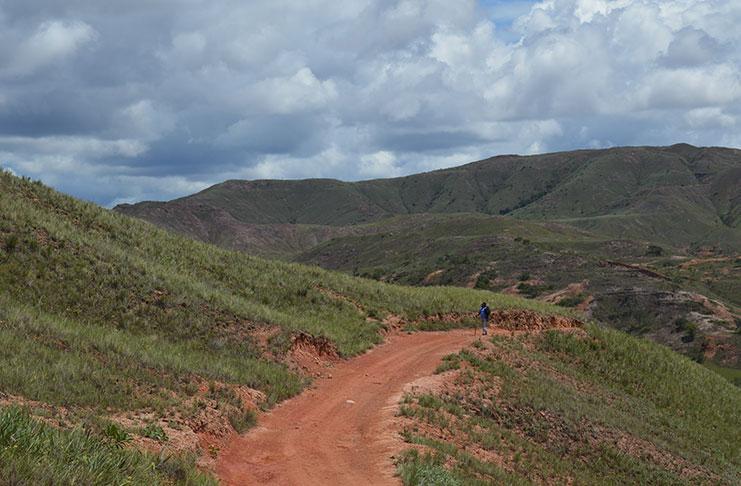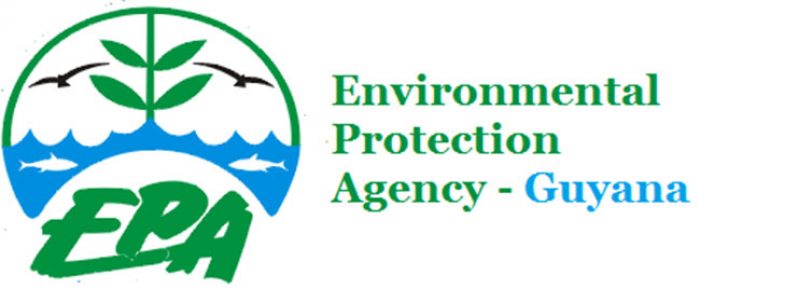Land
This week we will continue looking at the state of Guyana’s Environment, this time we will focus on… land. Guyana has an area of 83000 sq. miles, most of which is covered with forest. Majority of Guyana’s land belongs to the state (74%) while the rest of it is privately owned or are Amerindian lands. However, two percent of Guyana’s land mass is used for various socio-economic purposes which have various degree of impacts.
Fortunately for Guyana, compared to many countries in the world, including some of our South American neighbours, these impacts are quite low. This is mainly because there has not been much land transformation. However, this result should not be taken for granted. According to the State of the Environment Report, deforestation rates are driven mainly by mining and agriculture.

Pressure on Land Resources
The Environmental Protection Agency (EPA) is mandated to regulate land uses. Developmental Activities that may place pressure on the environment, including land resources, need to be authorised before they can operate legally. Some activities that may have negative impacts on land resources include:
• Mining (both legal and illegal);
• Logging (both legal and illegal);
• Building of Infrastructure (roads, settlements, public facilities, hydro-electricity);
• Agricultural Activities; and
• Fire (biomass burning).
It should be noted that natural hazards such as floods and forest fires may also place pressure on the land. However, the degradation resulting from human activities are far worse. Issues such as deforestation and soil erosion, poor waste management, use of pesticides and fertilisers, etc. affect the overall economy of the country. In addition, deforestation is a contributing factor to climate change since fewer trees mean more carbon dioxide in the atmosphere.
The Main Concern…
Historically, Guyana has been doing well in terms of deforestation. The country is known to have a pristine rainforest since deforestation rates have been very low (0.06%-0.07%). In fact, Guyana has established a REDD+ Fund with Norway, a system designed to reduce emissions from deforestation and forest degradation. Sadly, the rate is likely to increase due to growing demands for agriculture, timber, minerals and human settlements, and this may occur very soon. Also, with the construction of the Georgetown-Lethem Road, access to the forest will significantly increase, becoming a driver of deforestation.
Responses
All hope is not lost. Guyana has put many measures in place, including the Guyana-Norway Agreement, to maintain its records in terms of deforestation rate. The main legislation dealing with forestry is the Forest Act, 2009. The Act ensures sustainable forestry management through the issuance of state forest authorisations. It also highlights the importance of multiple uses of the forest including biodiversity conservation and the use of environmental services.
Then there is the National Forestry Policy 2011 which is implemented to ensure effective monitoring and management of the forest. The REDD+ programme is contained in this policy. This enables a robust Monitoring, Reporting and Verification System (MRV) since annual reporting needs to be conducted as a part of the Guyana-Norway Initiative. Additionally, with the implementation of the Green State Development Strategy (GSDS), there will be a more holistic approach, moving away from just placing focus on one area but allowing for environmental conservation in all sectors.
The EPA through an EU-FLEGT project is also building capacity for Community Forest Organisations to ensure they receive Environmental Authorisation for sustainable practices.
Let’s not forget the use of traditional knowledge from the Amerindians to enable land conservation. As they are the original stewards of the land, they are one of the main stakeholders in this process. Although the expected trends are showing that deforestation and land degradation rates will most likely increase, this does not have to be the case. There can exist sustainable logging, mining, and agriculture if people are willing to adhere to legislation and the relevant Code of Practice and ensure they are Authorised by the EPA.
If you wish to know more about the state and trends of Land Resources in Guyana, you can download the State of the Environment Report 2016 from the EPA’s website, www.epaguyana.org
You can share your ideas and questions by sending letters to: “Our Earth, Our Environment”, C/O ECEA Programme, Environmental Protection Agency, Ganges Street, Sophia, Georgetown, or email us at eit.epaguyana@gmail.com or follow us on Facebook and Instagram.



.jpg)









